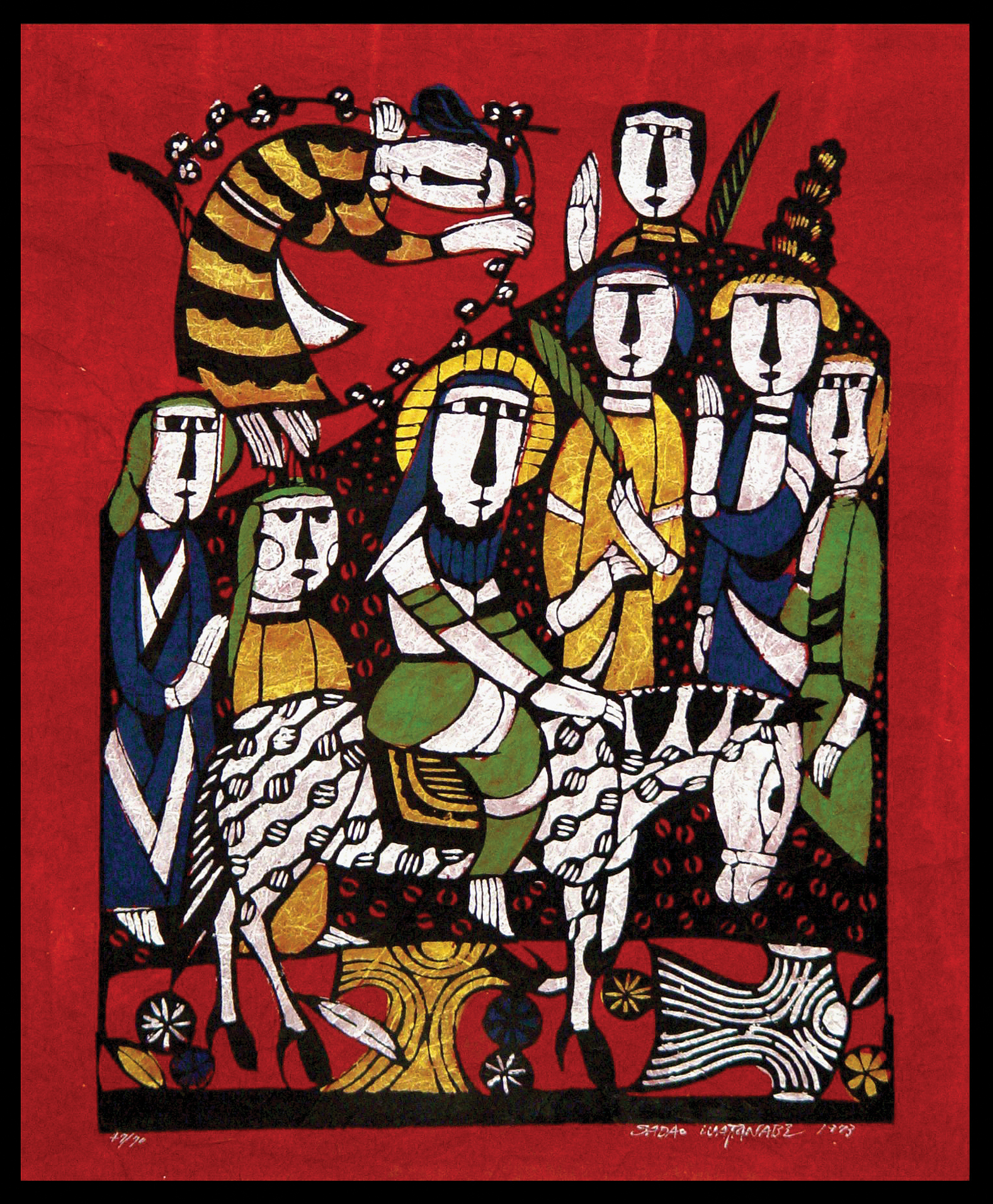Who Is Jesus?
Lesson Three

Who Is Jesus According to Luke?
Read the Gospel of Luke (especially Luke 1-4; 14:12-24; 16:19-31).
When I was perhaps eight or nine, my mother and I visited a nearby art museum. This excursion was a very big deal because my mother, a nurse, worked many hours and time away from duties, at work and home, was sadly infrequent. Etched into my memory of that day’s focus was a painting of a gentleman in costume standing or sitting near gleaming light filtering through a large heavy-framed window. As a child, I had no words for this painting, no way to discuss the artist or period or technique. My lens of interpreting this painting was limited to the particulars of the scene. The older me who is typing this today surmises that this painting (dimmed by memory, of course) was of or in the style of Johannes Vermeer, the Dutch artist of the seventeenth century, who, I now know, is heralded for painting domestic scenes that include startling splashes or beams of very realistic light.
Of all of the glorious works of art that we viewed that day, I remember only this painting. I responded to both bright and soft light, the solitary figure dressed in brown. But what etched this painting into my memory was my mother’s humane interpretation of it. As a nurse, a healer, her focus was on the man, not the room or sunbeam, the ruffled collar or the item (fruit? a bowl?) situated on the table. She noted that the man was afflicted in some way. Perhaps by malnutrition or an unhealed broken bone? My memory no longer recalls her specific diagnosis but I often think of that day and the lens that she wore as a nurse. This small moment was actually quite momentous as the subtle lessons learned were momentous—about the possibility of interpreting the world through more than one lens and that we each choose (to an extent) the lens through which we view the world. Possibility, choice, free will . . .
Jesus as healer. Judy Siker writes, “In addition to being a historian, Luke is considered the most learned of the Gospel writers. He is a Gentile, and by profession, a physician” (page 33). As I visit the Gospel of Luke, I can plainly see that Luke’s Jesus is concerned with the health of humanity. Luke’s Jesus heals. Luke’s Jesus heals body and soul.
“Once, when Jesus was in one of the cities, there was a man covered with leprosy. When he saw Jesus, he bowed with his face to the ground and begged him, ‘Lord, if you choose, you can make me clean.’ Immediately the leprosy left him” (Lk. 5:12–13).
“As he went, the crowds pressed in on him. Now there was a woman who had been suffering from hemorrhages for twelve years; and though she had spent all she had on physicians, no one could cure her. She came behind him and touched the fringe of his clothes, and immediately her hemorrhages stopped” (Lk. 8:43–44).
[A footnote about this passage: In the ancient world, before people understood the nature of germs, had access to clean water, soaps, and antibiotics, being perceived as unclean was a major concern. At the top of the list of the unclean were women with gynecological hemorrhaging and the dead. In the gospel of Luke, Jesus the healer did not turn from either—as he walked toward the home of Jarius’s 12-year-old daughter whom he would bring back to life minutes later (see Luke 8:40–42 and 8:49–55), he cured the woman who hemorrhaged for 12 years whose faith gave her the courage to emerge momentarily from the shadows to touch Jesus’ garment. None of us, no matter how society views our suffering, are excluded from Christ’s healing mercy.
Fellow Hoosier AmyLu Riley recently published a book of devotions about this very subject as she journeyed through illness. Her book is entitled, Jesus as Healer: Miracles and Meditations in Luke (AmyLu Riley, publisher; 2016; visit amylu-riley.com or her Facebook page for more information). Let me share a bit of her reflection and meditation about the healing of the bleeding woman:
“Something real happened when this woman touched Jesus—there was a transfer of power. Jesus, as God, knew who had touched him. He knew exactly where his power had gone. And he wanted this woman to acknowledge it publicly. The Scripture says she saw that she ‘could not go unnoticed.’ She likely feared more shame and embarrassment as she told the truth about her healing. Instead, Jesus elevated her with compassion. Rather than letting her slip away unnoticed, he spoke tenderly to her as a daughter of God. He publicly commended her for her spiritual faith, confirmed her physical healing, and gave her peace.
“God, never let me give up reaching for the edge of your cloak. When nothing else has healed me, the account reassures me that your power and my faith in you are always enough.
“When I am reluctant to speak about the healing you provide, remind me of this woman and of the blessings you mercifully added to her because she was willing to take a risk and tell a crowd about what you had done for her. Make me bold about talking about what you have done in my life.”
As Christians, we are not just bystanders in our healing. We gratefully and courageously wear the lens of people who proclaim the good news and all that that encompasses. For some of us, like my mother, that means caring for those who are ill. For others, that means advocating for the outcast, the poor, the stranger. Luke’s Jesus asks us to choose to adorn ourselves with the lenses of compassion and care. Healing requires us to act boldly in gratitude, paying forward all good things bestowed upon us as an act of praise for the one who cares for us all.
Carissa Herold
